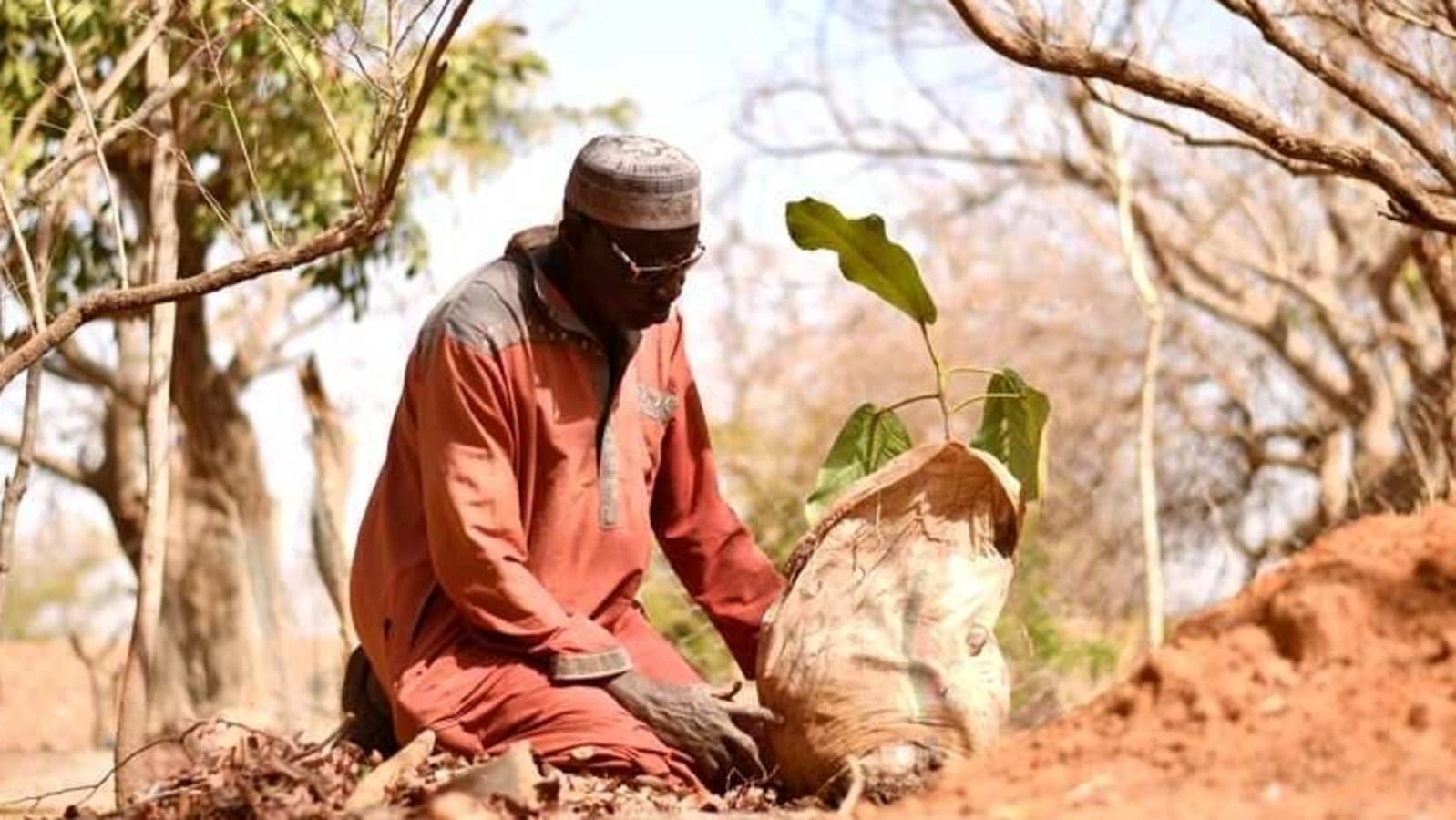‘Man who stopped the desert’: 70-year-old transforms barren land into forest

Yacouba Sawadogo murmurs advice to his sons as they press a sapling into the red earth using a centuries-old technique that he has adapted to conjure a forest from Burkina Faso’s rain-starved soil.
The farmer who is well into his 70s is hailed across his province as “the man who stopped the desert”. He won that title after tweaking a method of growing plants in pits to trap water – essential in the hardscrabble region fringing the Sahara.
After a terrible drought ravaged the Sahel in the 1970s and 1980s, many of Sawadogo’s neighbours abandoned their farms in northern Burkina Faso. But he stayed.
Pressures on land remain. Wind erosion, water shortages, rapid population growth and overgrazing cause around 470,000 hectares of land to degrade per year, data from the environment ministry show.
His use of so-called zai pits has in four decades created a 40-hectare oasis of thorny acacia, yellow-fruiting saba and other trees near his village in Yatenga province, bordering Mali.
“This forest that you see today was really a desert – there was not even the shade of a single tree here,” he says, sunlight dappling his face through the canopy above.
Farmers have dug small pits into the sunbaked soil for centuries and filled them with organic matter for their plants. Sawadogo experimented with digging wider and deeper pits and using stones.
When the rains arrive, his pits pit collect more water that feeds down to the seeds, increasing crop yields by up to 500%, according to the U.N. Environment Programme (UNEP).
The adoption of zai and similar soil and water conservation methods across the West African nation over the past 30 years has improved food security, groundwater levels, tree cover and biodiversity, according to a 2018 study in the journal Sustainability.
Sawadogo will keep planting. “If there are no trees and the land is not maintained, it would be a disaster.”

“평생 사상가. 웹 광신자. 좀비 중독자. 커뮤니케이터. 창조자. 프리랜서 여행 애호가.”
